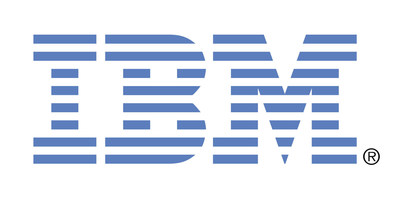WHIPPANY, N.J., Aug. 2, 2023 /PRNewswire/ — Suburban Propane Partners, L.P. (NYSE: SPH), a nationwide distributor of propane, renewable propane, renewable natural gas, fuel oil and related products and services, as well as a marketer of natural gas and electricity and investor in low carbon fuel alternatives, today united with Move America Forward a Sacramento, CA-based nonprofit military charity that sends care packages filled with essential items to deployed military service members.
“Suburban Propane proudly supports our military and is a longtime veteran employer,” said Nandini Sankara, Spokesperson, Suburban Propane. “We’re honored to team up with Move America Forward to provide essential supplies to our deployed troops, and show their families that they are respected and cared for back home.”
Suburban Propane’s donation provided more than 200 care packages, which were packed today by local Suburban Propane employees. The packages contain a variety of essential non-perishable items; including gourmet coffee, snacks, protein bars, SPF sunscreen and lip balm, bug repellent, magazines, phone cards, instant lunches, batteries, personal hygiene kits, handmade items, and letters of encouragement. Each care package provides a taste of home to up to 10 military personnel, serving more than 1,000 deployed troops.
“Being a United States Navy Veteran who served in Operations Enduring Freedom and Iraqi Freedom, I understand firsthand the challenges and sacrifices our troops and their families make,” said Scott Raab, Outreach Director, Move America Forward and United States Navy Veteran (OEF/OIF). “The generous donation from Suburban Propane to our care package program is truly impactful. It shows how companies like Suburban Propane make a difference by supporting our deployed troops and bringing comfort to their families back home. Thank you for your unwavering commitment to our military community.”
SuburbanCares is committed to supporting community efforts across the United States. Recently, SuburbanCares has undertaken charitable endeavors in numerous communities within Huntsville, AL; Syracuse and Albany, NY; Key West and Lake Worth, FL; Spokane, WA; Boston, MA; Helena, MT; Charlotte, NC; Lewes, DE; San Diego and Santa Rosa, CA; Dayton, OH; Philadelphia, PA; Santa Fe, NM; Columbia and Charleston, SC; New Brunswick, NJ; and fed healthcare professionals in 2020 in some of the most COVID-19 affected regions in the nation, including Florida, California, Texas, Maryland, New Jersey, New York, and Washington, D.C.
About Suburban Propane:
Suburban Propane Partners, L.P. (“Suburban Propane”) is a publicly traded master limited partnership listed on the New York Stock Exchange. Headquartered in Whippany, New Jersey, Suburban Propane has been in the customer service business since 1928 and is a nationwide distributor of propane, renewable propane, renewable natural gas (“RNG”), fuel oil and related products and services, as well as a marketer of natural gas and electricity and producer of and investor in low carbon fuel alternatives, servicing the energy needs of approximately 1 million residential, commercial, governmental, industrial and agricultural customers through approximately 700 locations across 42 states.
Suburban Propane is supported by three core pillars: (1) Suburban Commitment – showcasing Suburban Propane’s 95-year legacy, and ongoing commitment to the highest standards for dependability, flexibility, and reliability that underscores Suburban Propane’s commitment to excellence in customer service; (2) SuburbanCares – highlighting continued dedication to giving back to local communities across Suburban Propane’s national footprint; and (3) Go Green with Suburban Propane – promoting the clean burning and versatile nature of propane and renewable propane as a bridge to a green energy future and investing in the next generation of innovative, renewable energy alternatives.
For additional information on Suburban Propane, please visit www.suburbanpropane.com.
About Move America Forward:
Move America Forward (MAF), is a nonprofit military charity based in Sacramento, California, dedicated to supporting the brave men and women of our Armed Forces. Its mission is to provide emotional and tangible support to active-duty troops deployed to combat areas around the world.
MAF believes that it is everyone’s duty as American citizens to show our troops that they are in our hearts and minds, and that all are grateful for the sacrifices they make to protect freedom. Over the years, MAF has sent over 900 tons of care packages to deployed troops, and its efforts have been supported by thousands of pro-troop activists, veterans, and military families across the nation who share in an unwavering support of the military men and women on the front lines to protect the country.
For more information on Move America Forward, please visit www.moveamericaforward.org.
 View original content to download multimedia:https://www.prnewswire.com/news-releases/suburban-propane-and-move-america-forward-unite-to-support-over-1-000-deployed-troops-and-military-families-301892012.html
View original content to download multimedia:https://www.prnewswire.com/news-releases/suburban-propane-and-move-america-forward-unite-to-support-over-1-000-deployed-troops-and-military-families-301892012.html
SOURCE Suburban Propane Partners, L.P.

Source link
 Private Internet Access gives you unparalleled access to thousands
of next-gen servers in over 83 countries and each US state. Your
VPN experience will always be fast, smooth, and reliable.
Private Internet Access gives you unparalleled access to thousands
of next-gen servers in over 83 countries and each US state. Your
VPN experience will always be fast, smooth, and reliable.



![DVIDS – Images – MCPON Honea Visits 7th Fleet [Image 1 of 5] DVIDS – Images – MCPON Honea Visits 7th Fleet [Image 1 of 5]](https://101veterans.com/wp-content/uploads/2023/08/1691070297_dvids_logo_main.png)

 Private Internet Access gives you unparalleled access to thousands
of next-gen servers in over 83 countries and each US state. Your
VPN experience will always be fast, smooth, and reliable.
Private Internet Access gives you unparalleled access to thousands
of next-gen servers in over 83 countries and each US state. Your
VPN experience will always be fast, smooth, and reliable.













